Quadrilaterals
ABCD is a trapezium in which AB || DC, BD is a diagonal and E is the mid – point of AD. A line is drawn through E parallel to AB intersecting BC at F (see the given figure). Show that F is the mid-point of BC.
Let EF intersect DB at G.
By converse of mid-point theorem, we know that a line drawn through the mid-point of any side of a triangle and parallel to another side, bisects the third side.
In ΔABD,
EF || AB and E is the mid-point of AD.
Therefore, G will be the mid-point of DB.
As EF || AB and AB || CD,
∴ EF || CD (Two lines parallel to the same line are parallel to each other)
In ΔBCD, GF || CD and G is the mid-point of line BD. Therefore, by using converse of mid-point theorem, F is the mid-point of BC.
Sponsor Area
Some More Questions From Quadrilaterals Chapter
Show that if the diagonals of a quadrilateral are equal and bisect each other at right angles, then it is a square.
Diagonal AC of a parallelogram ABCD bisects ∠A (see the given figure). Show that
(i) It bisects ∠C also,
(ii) ABCD is a rhombus.
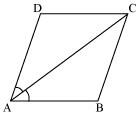
ABCD is a rhombus. Show that diagonal AC bisects ∠A as well as ∠C and diagonal BD bisects ∠B as well as ∠D.
In parallelogram ABCD, two points P and Q are taken on diagonal BD such that DP = BQ (see the given figure).
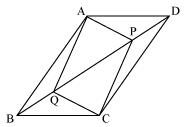
Show that:
(i) ΔAPD ≅ ΔCQB
(ii) AP = CQ
(iii) ΔAQB ≅ ΔCPD
(iv) AQ = CP
(v) APCQ is a parallelogram
ABCD is a parallelogram and AP and CQ are perpendiculars from vertices A and C on diagonal BD (See the given figure). Show that
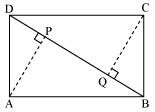
(i) ΔAPB ≅ ΔCQD
(ii) AP = CQ
In ΔABC and ΔDEF, AB = DE, AB || DE, BC = EF and BC || EF. Vertices A, B and C are joined to vertices D, E and F respectively (see the given figure). Show that
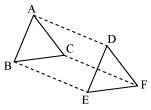
(i) Quadrilateral ABED is a parallelogram
(ii) Quadrilateral BEFC is a parallelogram
(iii) AD || CF and AD = CF
(iv) Quadrilateral ACFD is a parallelogram
(v) AC = DF
(vi) ΔABC ≅ ΔDEF.
ABCD is a trapezium in which AB || CD and AD = BC (see the given figure). Show that
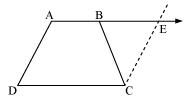
(i) ∠A = ∠B
(ii) ∠C = ∠D
(iii) ΔABC ≅ ΔBAD
(iv) diagonal AC = diagonal BD
Mock Test Series
Sponsor Area
NCERT Book Store
NCERT Sample Papers
Sponsor Area